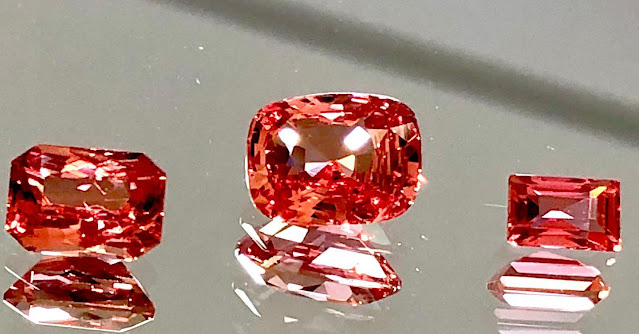7 FACTS YOU MAY NOT KNOW ABOUT THE ALEXANDRITE GEMSTONE
Alexandrite Gemstone enthusiasts describe alexandrite as unique, passionate and eternally appealing. Because this magnificent gem is incredibly uncommon and pricey, it's simple to fall in love with it but hard to own. Those who already own it, or who plan to do so, deserve a particular shout-out. alexandrite is a gemstone that is unique in its own right.
1. ALEXANDRITE WAS ORIGINALLY DISCOVERED IN RUSSIA, 1834.
In the Ural Mountains, Nils Gustaf Nordenskiöld, a Finnish mineralogist and explorer, unearthed the first alexandrite specimen in history. Alexander II, the Russian Czar, is credited with giving the gem its name. Alexander Nikolaevich, the future czar, was 16 years old when he was discovered.
2. ALEXANDRITE EXHIBITS A DIFFERENT COLOR IN ARTIFICIAL AND DAYLIGHT
Alexandrite has been classified as a color changing variety due to its pleochroic characteristic. As a result, it changes color based on the type of lighting used. Under daylight, alexandrite exhibits a blue-green color, but in incandescent light it appears red. Color change Alexandrite Gems are rarest in simple green or golden green hue.
In the middle of the gem is a visible white stripe that gives it the appearance of a cat's eye. The second word for chatoyancy is derived from this. This is how the best "cat's eye" performance can be observed when the Alexandrite Gem is swung back and forth under fluorescent light. Among the gemstones that exhibit the best chatoyancy, Alexandrite is one of them.
4. ALEXANDRITE IS MORE EXPENSIVE THAN SAPPHIRE, RUBY, AND EMERALD
According to the studies, alexandrite specimens under one carat sell for more than other well-known colored gems like sapphire, ruby, and emerald. Another prominent name included to this category, whether surprisingly or not, is diamond. Not only is alexandrite more costly than the rock we all know as "a girl's best friend," but it is also rarer. As a result, a single carat of genuine alexandrite costs between $20,000 and $35,000, but a perfect, D-grade diamond of the same size costs between $24,000 and $29,000.
5. ALEXANDRITE IS MAINLY FACETED INTO CUSHION AND ROUND CUTS
Because most alexandrite specimens have a carat weight of less than 2 CTW, cutters usually give them the cushion or round shape, as these two forms perform well for tiny stones. As a result of its true color characteristics, the alexandrite gemstone is frequently found in ring and necklace designs, typically serving as a focal point. Alexandrite with a round shape is often utilized in gemstone bracelets.
6. ALEXANDRITE IS RARELY TREATED.
Alexandrite, unlike nearly every other member of the gemstone family, is usually left untreated. As a result, it is regarded as a very valuable asset. Imitations do exist, though, and they may be easily detected using the tools and procedures that current appraisers utilize in their job. Even synthesized alexandrites, which are much less expensive than their mined counterparts, are sometimes beyond of reach for the typical customer.
7. ALEXANDRITE IS ASSOCIATED WITH LOVE AND FORTUNE
Many myths and tales identify alexandrite as a bringer of good fortune, particularly in matters of love and money. As a result of the widespread idea that the alexandrite gemstone is a good omen, buyers like to include it in their engagement ring designs. Other alexandrite symbolisms include:
• It promotes imagination, creativity, and intuition.
• It strengthens the focus, concentration and the strive for excellence.
• It represents a bridge between the physical and spiritual world.




Comments
Post a Comment